Review of the Effects of Fossil Fuels and the Need for a Hydrogen Fuel Cell Policy in Malaysia
Abstract
1. Introduction
2. Methods
3. Findings
3.1. Thematic Analysis from Atlas.ti 8
3.2. Depleting Fossil Fuel
3.3. Carbon Emission and Environmental Degradation
3.4. Climate Change and the Water–Energy–Food Nexus
3.5. Energy Accessibility in Rural and Inundated Areas
4. Discussion
4.1. Hydrogen Fuel Cell to Mitigate Climate Change
4.2. The Blueprint for Fuel Cell Industries in Malaysia
4.3. Prospect and Challenges in Regulating Hydrogen Fuel Cells in Malaysia
5. Conclusions
Author Contributions
Funding
Data Availability Statement
Conflicts of Interest
References
- Foo, K.Y. A vision on the opportunities, policies and coping strategies for the energy security and green energy development in Malaysia. Renew. Sustain. Energy Rev. 2015, 51, 1477–1498. [Google Scholar] [CrossRef]
- Przekota, G.; Szczepańska-Przekota, A. Pro-Inflationary Impact of the Oil Market—A Study for Poland. Energies 2022, 15, 3045. [Google Scholar] [CrossRef]
- Mekhilef, S.; Barimani, M.; Safari, A.; Salam, Z. Malaysia's renewable energy policies and programs with green aspects. Renew. Sustain. Energy Rev. 2014, 40, 497–504. [Google Scholar] [CrossRef]
- Nowell, L.S.; Norris, J.M.; White, D.E.; Moules, N.J. Thematic Analysis: Striving to Meet the Trustworthiness Criteria. Int. J. Qual. Methods 2017, 16, 1–13. [Google Scholar] [CrossRef]
- Bello, M.O.; Solarin, S.A.; Yen, Y.Y. Hydropower and potential for interfuel substitution: The case of electricity sector in Malaysia. Energy 2018, 151, 966–983. [Google Scholar] [CrossRef]
- Lean, H.H.; Smyth, R. Disaggregated energy demand by fuel type and economic growth in Malaysia. Appl. Energy 2014, 132, 168–177. [Google Scholar] [CrossRef]
- Behrouzi, F.; Nakisa, M.; Maimun, A.; Ahmed, Y.M. Renewable energy potential in Malaysia: Hydrokinetic river/marine technology. Renew. Sustain. Energy Rev. 2016, 62, 1270–1281. [Google Scholar] [CrossRef]
- Shafie, S.M.; Mahlia, T.M.I.; Masjuki, H.H.; Andriyana, A. Current energy usage and sustainable energy in Malaysia: A review. Renew. Sustain. Energy Rev. 2011, 15, 4370–4377. [Google Scholar] [CrossRef]
- Petinrin, J.O.; Shaaban, M. Renewable energy for continuous energy sustainability in Malaysia. Renew. Sustain. Energy Rev. 2015, 50, 967–981. [Google Scholar] [CrossRef]
- Li, Y.; Shi, X.; Su, B. Economic, social and environmental impacts of fuel subsidies: A revisit of Malaysia. Energy Policy 2017, 110, 51–61. [Google Scholar] [CrossRef]
- Sopian, K.; Othman, M.; Yatim, B.; Daud, W.R.W. Future Directions in Malaysian Environment Friendly Renewable Energy Technologies Research and Development. ISESCO Sci. Technol. Vis. 2005, 1, 30–36. [Google Scholar]
- Ong, P.Y.; Chin, C.M.M.; Yap, E.H. Reviewing Malaysia’s Renewable Energy Policies: A Management Framework Perspective. J. Clean Energy Technol. 2016, 4, 448–452. [Google Scholar] [CrossRef]
- Suruhanjaya Tenaga. Our Energy Landscape. In Energy Malaysia; Suruhanjaya Tenaga: Putrajaya, Malaysia, 2017. [Google Scholar]
- Sopian, K.; Daud, W.R.W. Challenges and future developments in proton exchange membrane fuel cells. Renew. Energy 2006, 31, 719–727. [Google Scholar] [CrossRef]
- Sharvini, S.R.; Noor, Z.Z.; Chong, C.S.; Stringer, L.C.; Yusuf, R.O. Energy consumption trends and their linkages with renewable energy policies in East and Southeast Asian countries: Challenges and opportunities. Sustain. Environ. Res. 2018, 28, 257–266. [Google Scholar] [CrossRef]
- Reid, A. Energy Policy. Policy Stud. J. 2017, 2, 141–146. [Google Scholar] [CrossRef]
- Mohamed, A.R.; Lee, K.T. Energy for sustainable development in Malaysia: Energy policy and alternative energy. Energy Policy 2006, 34, 2388–2397. [Google Scholar] [CrossRef]
- Prontera, A. Energy policy: Concepts, actors, instruments and recent developments. World Political Sci. Rev. 2009, 5, 37–69. [Google Scholar] [CrossRef]
- Ashourian, M.H.; Cherati, S.M.; Mohd Zin, A.A.; Niknam, N.; Mokhtar, A.S.; Anwari, M. Optimal green energy management for island resorts in Malaysia. Renew. Energy 2013, 51, 36–45. [Google Scholar] [CrossRef]
- Shahid, S.; Pour, S.H.; Wang, X.; Shourav, S.A.; Minhans, A.; Ismail, T.B. Impacts and adaptation to climate change in Malaysian real estate. Int. J. Clim. Change Strateg. Manag. 2017, 9, 87–103. [Google Scholar] [CrossRef]
- Yatim, P.; Mamat, M.N.; Mohamad-Zailani, S.H.; Ramlee, S. Energy policy shifts towards sustainable energy future for Malaysia. Clean Technol. Environ. Policy 2016, 18, 1685–1695. [Google Scholar] [CrossRef]
- Oliveira, R.L.D. Powering the Future: Malaysia’ s Energy Policy Challenges; Institute for Democracy and Economic Affairs: Kuala Lumpur, Malaysia, 2018; pp. 1–30. [Google Scholar]
- Haiges, R.; Wang, Y.D.; Ghoshray, A.; Roskilly, A.P. Optimization of Malaysia's power generation mix to meet the electricity demand by 2050. Energy Procedia 2017, 142, 2844–2851. [Google Scholar] [CrossRef]
- Ambrose, A.F.; Al-Amin, A.Q.; Rasiah, R.; Saidur, R.; Amin, N. Prospects for introducing hydrogen fuel cell vehicles in Malaysia. Int. J. Hydrog. Energy 2017, 42, 9125–9134. [Google Scholar] [CrossRef]
- Khorasanizadeh, H.; Honarpour, A.; Park, M.S.A.; Parkkinen, J.; Parthiban, R. Adoption factors of cleaner production technology in a developing country: Energy efficient lighting in Malaysia. J. Clean. Prod. 2016, 131, 97–106. [Google Scholar] [CrossRef]
- Ho, L.W. Wind energy in Malaysia: Past, present and future. Renew. Sustain. Energy Rev. 2016, 53, 279–295. [Google Scholar] [CrossRef]
- Bujang, A.S.; Bern, C.J.; Brumm, T.J. Summary of energy demand and renewable energy policies in Malaysia. Renew. Sustain. Energy Rev. 2016, 53, 1459–1467. [Google Scholar] [CrossRef]
- Yeap, C. Special Report: At RM77.7 bil, Subsidies Exceed Budgeted Development Expenditure in 2022. Available online: https://www.theedgemarkets.com/article/special-report-rm777-bil-subsidies-exceed-budgeted-development-expenditure-2022 (accessed on 20 October 2022).
- Chien Bong, C.P.; Ho, W.S.; Hashim, H.; Lim, J.S.; Ho, C.S.; Peng Tan, W.S.; Lee, C.T. Review on the renewable energy and solid waste management policies towards biogas development in Malaysia. Renew. Sustain. Energy Rev. 2017, 70, 988–998. [Google Scholar] [CrossRef]
- Ouyang, X.; Lin, B. Impacts of increasing renewable energy subsidies and phasing out fossil fuel subsidies in China. Renew. Sustain. Energy Rev. 2014, 37, 933–942. [Google Scholar] [CrossRef]
- Musa, S.D.; Zhonghua, T.; Ibrahim, A.O.; Habib, M. China's energy status: A critical look at fossils and renewable options. Renew. Sustain. Energy Rev. 2018, 81, 2281–2290. [Google Scholar] [CrossRef]
- Suruhanjaya Tenaga. Energy in Malaysia; The IBR Asia Group Sdn. Bhd.: Petaling Jaya, Malaysia, 2017; Volume 12, p. 26. [Google Scholar]
- Quasem Al-Amin, A.; Hamid Jaafar, A.; Siwar, C. Climate change mitigation and policy concern for prioritization. Int. J. Clim. Change Strateg. Manag. 2010, 2, 418–425. [Google Scholar] [CrossRef]
- Alam, M.M.; Wahid, A.N.; Siwar, C. Resilience, adaptation and expected support for food security among the Malaysian east coast poor households. Manag. Environ. Qual. Int. J. 2018, 29, 877–902. [Google Scholar] [CrossRef]
- Begum, R.A.; Sohag, K.; Abdullah, S.M.S.; Jaafar, M. CO2 emissions, energy consumption, economic and population growth in Malaysia. Renew. Sustain. Energy Rev. 2015, 41, 594–601. [Google Scholar] [CrossRef]
- Von Kameke, L. Territorial Carbon Dioxide (CO2) Emissions in Southeast Asia from 1960 to 2021, by Country; Statista: Hamburg, Germany, 2022. [Google Scholar]
- Rahman, M.S.; Noman, A.H.M.; Shahari, F. Does economic growth in Malaysia depend on disaggregate energy? Renew. Sustain. Energy Rev. 2017, 78, 640–647. [Google Scholar] [CrossRef]
- Le, T.H.; Quah, E. Income level and the emissions, energy, and growth nexus: Evidence from Asia and the Pacific. Int. Econ. 2018, 156, 193–205. [Google Scholar] [CrossRef]
- Bekhet, H.A.; Othman, N.S. The role of renewable energy to validate dynamic interaction between CO2 emissions and GDP toward sustainable development in Malaysia. Energy Econ. 2018, 72, 47–61. [Google Scholar] [CrossRef]
- Jalal, T.S.; Bodger, P. National energy policies and the electricity sector in Malaysia. In Proceedings of the 2009 3rd International Conference on Energy and Environment: Advancement Towards Global Sustainability, Malacca, Malaysia, 7–8 December 2009. [Google Scholar] [CrossRef]
- Hossain, M.; Huda, A.S.N.; Mekhilef, S.; Seyedmahmoudian, M.; Horan, B.; Stojcevski, A.; Ahmed, M. A state-of-the-art review of hydropower in Malaysia as renewable energy: Current status and future prospects. Energy Strategy Rev. 2018, 22, 426–437. [Google Scholar] [CrossRef]
- Cheng, Y.; Zhang, N.; Kang, C. Carbon emission flow: From electricity network to multiple energy systems. Glob. Energy Interconnect. 2018, 1, 500–506. [Google Scholar] [CrossRef]
- Heydari, A.; Garcia, D.A.; Keynia, F.; Bisegna, F.; Santoli, L.D. Renewable Energies Generation and Carbon Dioxide Emission Forecasting in Microgrids and National Grids using GRNN-GWO Methodology. Energy Procedia 2019, 159, 154–159. [Google Scholar] [CrossRef]
- Haiges, R.; Wang, Y.D.; Ghoshray, A.; Roskilly, A.P. Unconventional fuel pathways for decarbonizing the electrical power generation in Malaysia by 2050. Energy Procedia 2019, 158, 4238–4245. [Google Scholar] [CrossRef]
- Mohamad, D.; Bahauddin, A.; Mohamed, B. Tourism development progress of two islands of Malaysia: The locals’ perspective towards climate change. Worldw. Hosp. Tour. 2016, 8, 534–548. [Google Scholar] [CrossRef]
- Pauzi, A.M.; Hasran, U.A.; Basri, S.A.; Karim, N. Recent Perspectives and Crucial Challenges on Unitized Regenerative Fuel Cell (URFC). J. Kejuruter. 2018, SI1, 37–46. [Google Scholar] [CrossRef]
- Hannan, M.A.; Begum, R.A.; Abdolrasol, M.G.; Hossain Lipu, M.S.; Mohamed, A.; Rashid, M.M. Review of baseline studies on energy policies and indicators in Malaysia for future sustainable energy development. Renew. Sustain. Energy Rev. 2018, 94, 551–564. [Google Scholar] [CrossRef]
- Maulud, A.L.; Saidi, H. The Malaysian Fifth Fuel Policy: Re-strategising the Malaysian Renewable Energy Initiatives. Energy Policy 2012, 48, 88–92. [Google Scholar] [CrossRef]
- Shaffril, H.A.M.; Samah, B.A.; D’Silva, J.L.; Yassin, S.M. The process of social adaptation towards climate change among Malaysian fishermen. Int. J. Clim. Change Strateg. Manag. 2013, 5, 38–53. [Google Scholar] [CrossRef]
- Munoz, H. The Clean-Fuel Vehicle Tax Deduction: Will It Drive an Increase in Fuel Efficiency Standards? Villanova Environ. Law J. 2004, 15, 115–138. [Google Scholar]
- Prasad, A.K. Alternative Energy Technologies For Transportation. Villanova Environ. Law J. 2014, 25, 107–119. [Google Scholar]
- Mekhilef, S.; Safari, A.; Mustaffa, W.E.S.; Saidur, R.; Omar, R.; Younis, M.A.A. Solar energy in Malaysia: Current state and prospects. Renew. Sustain. Energy Rev. 2012, 16, 386–396. [Google Scholar] [CrossRef]
- Al-Amin, A.Q.; Rasiah, R.; Chenayah, S. Prioritizing climate change mitigation: An assessment using Malaysia to reduce carbon emissions in future. Environ. Sci. Policy 2015, 50, 24–33. [Google Scholar] [CrossRef]
- Mohamed Shaffril, H.A.; D'Silva, J.L.; Kamaruddin, N.; Omar, S.Z.; Bolong, J. The coastal community awareness towards the climate change in Malaysia. Int. J. Clim. Change Strateg. Manag. 2015, 7, 516–533. [Google Scholar] [CrossRef]
- Joshi, D. Evaluating the Performance of the Sustainable Energy Development Authority (SEDA) and Renewable Energy Policy in Malaysia; Penang Institute: George Town, Malaysia, 2018. [Google Scholar]
- Alam, M.M.; Siwar, C.; Talib, B.A.; Wahid, A.N.M. Climatic changes and vulnerability of household food accessibility. Int. J. Clim. Change Strateg. Manag. 2017, 9, 387–401. [Google Scholar] [CrossRef]
- D'Amato, G.; Vitale, C.; Rosario, N.; Neto, H.J.C.; Chong-Silva, D.C.; Mendonça, F.; Perini, J.; Landgraf, L.; Solé, D.; Sánchez-Borges, M.; et al. Climate change, allergy and asthma, and the role of tropical forests. World Allergy Organ. J. 2017, 10, 11–18. [Google Scholar] [CrossRef]
- Peter, M.C. Emerging Issues Relating to The Burgeoning Hydrogen Economy. Energy Law J. 2006, 27, 39–64. [Google Scholar]
- Romm, J. California's Renewable Energy Sector: California's Hydrogen Highway Reconsidered. Gold. Gate Univ. Law Rev. 2006, 36, 393–411. [Google Scholar]
- Dunn, S. Hydrogen Futures: Toward a Sustainable Energy System. Syracuse Sci. Technol. Law Report. 2012, 27, 171–182. [Google Scholar] [CrossRef]
- TenagaLink. After the Storm: Improved Safety Measures in Hand, TNB Stands Ready for Future Floods. TenagaLink 2015, 4, 1–42. [Google Scholar]
- Ong, B.C.; Kamarudin, S.K.; Basri, S. Direct liquid fuel cells: A review. Int. J. Hydrog. Energy 2017, 42, 10142–10157. [Google Scholar] [CrossRef]
- The ASEAN Secretariat. ASEAN State of Climate Change Report; ASEAN: Jakarta, Indonesia, 2021; pp. 1–167. [Google Scholar]
- Borhanazad, H.; Mekhilef, S.; Saidur, R.; Boroumandjazi, G. Potential application of renewable energy for rural electrification in Malaysia. Renew. Energy 2013, 59, 210–219. [Google Scholar] [CrossRef]
- Das, H.S.; Tan, C.W.; Yatim, A.H.M.; Lau, K.Y. Feasibility analysis of hybrid photovoltaic/battery/fuel cell energy system for an indigenous residence in East Malaysia. Renew. Sustain. Energy Rev. 2017, 76, 1332–1347. [Google Scholar] [CrossRef]
- Wang, X.; Li, J. Influence of using household biogas digesters on household energy consumption in rural areas-a case study in Lianshui County in China. Renew. Sustain. Energy Rev. 2005, 9, 229–236. [Google Scholar] [CrossRef]
- Hirmer, S.; Guthrie, P. The benefits of energy appliances in the off-grid energy sector based on seven off-grid initiatives in rural Uganda. Renew. Sustain. Energy Rev. 2017, 79, 924–934. [Google Scholar] [CrossRef]
- Copena, D.; Simón, X. Wind farms and payments to landowners: Opportunities for rural development for the case of Galicia. Renew. Sustain. Energy Rev. 2018, 95, 38–47. [Google Scholar] [CrossRef]
- Ferrer-Martí, L.; Ferrer, I.; Sánchez, E.; Garfí, M. A multi-criteria decision support tool for the assessment of household biogas digester programmes in rural areas. A case study in Peru. Renew. Sustain. Energy Rev. 2018, 95, 74–83. [Google Scholar] [CrossRef]
- Liu, X.; Hu, Y.; Xiao, Y. Risk management for rural energy industry of Sichuan Province in China. Renew. Sustain. Energy Rev. 2017, 69, 1029–1044. [Google Scholar] [CrossRef]
- Pereira, M.G.; Freitas, M.A.V.; Da Silva, N.F. Rural electrification and energy poverty: Empirical evidences from Brazil. Renew. Sustain. Energy Rev. 2010, 14, 1229–1240. [Google Scholar] [CrossRef]
- Herington, M.J.; Van de Fliert, E.; Smart, S.; Greig, C.; Lant, P.A. Rural energy planning remains out-of-step with contemporary paradigms of energy access and development. Renew. Sustain. Energy Rev. 2017, 67, 1412–1419. [Google Scholar] [CrossRef]
- Sukhwani, V.; Shaw, R.; Mitra, B.K.; Yan, W. Optimizing Food-Energy-Water (FEW) nexus to foster collective resilience in urban-rural systems. Prog. Disaster Sci. 2019, 1, 100005–100008. [Google Scholar] [CrossRef]
- Arabatzis, G.; Kitikidou, K.; Tampakis, S.; Soutsas, K. The fuelwood consumption in a rural area of Greece. Renew. Sustain. Energy Rev. 2012, 16, 6489–6496. [Google Scholar] [CrossRef]
- Luo, G.L.; Zhang, X. Universalization of access to modern energy services in Tibetan rural households-Renewable energy's exploitation, utilization, and policy analysis. Renew. Sustain. Energy Rev. 2012, 16, 2373–2380. [Google Scholar] [CrossRef]
- Mohammed, Y.S.; Mokhtar, A.S.; Bashir, N.; Saidur, R. An overview of agricultural biomass for decentralized rural energy in Ghana. Renew. Sustain. Energy Rev. 2013, 20, 15–25. [Google Scholar] [CrossRef]
- Belmonte, S.; Escalante, K.N.; Franco, J. Shaping changes through participatory processes: Local development and renewable energy in rural habitats. Renew. Sustain. Energy Rev. 2015, 45, 278–289. [Google Scholar] [CrossRef]
- Pode, R.; Pode, G.; Diouf, B. Solution to sustainable rural electrification in Myanmar. Renew. Sustain. Energy Rev. 2016, 59, 107–118. [Google Scholar] [CrossRef]
- Hadwan, M.; Alkholidi, A. Solar power energy solutions for Yemeni rural villages and desert communities. Renew. Sustain. Energy Rev. 2016, 57, 838–849. [Google Scholar] [CrossRef]
- Afsharzade, N.; Papzan, A.; Ashjaee, M.; Delangizan, S.; Van Passel, S.; Azadi, H. Renewable energy development in rural areas of Iran. Renew. Sustain. Energy Rev. 2016, 65, 743–755. [Google Scholar] [CrossRef]
- Sánchez, A.S.; Torres, E.A.; Kalid, R.A. Renewable energy generation for the rural electrification of isolated communities in the Amazon Region. Renew. Sustain. Energy Rev. 2015, 49, 278–290. [Google Scholar] [CrossRef]
- López-González, A.; Domenech, B.; Ferrer-Martí, L. Formative evaluation of sustainability in rural electrification programs from a management perspective: A case study from Venezuela. Renew. Sustain. Energy Rev. 2018, 95, 95–109. [Google Scholar] [CrossRef]
- Mollik, S.; Rashid, M.M.; Hasanuzzaman, M.; Karim, M.E.; Hosenuzzaman, M. Prospects, progress, policies, and effects of rural electrification in Bangladesh. Renew. Sustain. Energy Rev. 2016, 65, 553–567. [Google Scholar] [CrossRef]
- Bensch, G.; Grimm, M.; Huppertz, M.; Langbein, J.; Peters, J. Are promotion programs needed to establish off-grid solar energy markets? Evidence from rural Burkina Faso. Renew. Sustain. Energy Rev. 2018, 90, 1060–1068. [Google Scholar] [CrossRef]
- Manos, B.; Partalidou, M.; Fantozzi, F.; Arampatzis, S.; Papadopoulou, O. Agro-energy districts contributing to environmental and social sustainability in rural areas: Evaluation of a local public-private partnership scheme in Greece. Renew. Sustain. Energy Rev. 2014, 29, 85–95. [Google Scholar] [CrossRef]
- Liu, Y.; Yu, S.; Zhu, Y.; Wang, D.; Liu, J. Modeling, planning, application and management of energy systems for isolated areas: A review. Renew. Sustain. Energy Rev. 2018, 82, 460–470. [Google Scholar] [CrossRef]
- Phurailatpam, C.; Rajpurohit, B.S.; Wang, L. Planning and optimization of autonomous DC microgrids for rural and urban applications in India. Renew. Sustain. Energy Rev. 2018, 82, 194–204. [Google Scholar] [CrossRef]
- Muhammad Asyraf Azni; Rasyikah Md Khalid. Hydrogen Fuel Cell Legal Framework in the United States, Germany, and South Korea—A Model for a Regulation in Malaysia. Sustainability 2021, 13, 2214. [Google Scholar] [CrossRef]
- Yang, E.N.C. Enhancing Malaysia’s Renewable Energy Sector. Available online: https://www.thestar.com.my/opinion/letters/2022/12/24/enhancing-malaysias-renewable-energy-sector (accessed on 25 December 2022).
- Murad, W.; Islam Molla, R.; Bin Mokhtar, M.; Raquib, A. Climate change and agricultural growth: An examination of the link in Malaysia. Int. J. Clim. Change Strateg. Manag. 2010, 2, 403–417. [Google Scholar] [CrossRef]
- Sin, Y.T.; Najmi, W.M.W.A. Industrial and Academic Collaboration Strategies on Hydrogen Fuel Cell Technology Development in Malaysia. Procedia-Soc. Behav. Sci. 2013, 90, 879–888. [Google Scholar] [CrossRef]
- Bel, G.; Joseph, S. Climate change mitigation and the role of technological change: Impact on selected headline targets of Europe's 2020 climate and energy package. Renew. Sustain. Energy Rev. 2018, 82, 3798–3807. [Google Scholar] [CrossRef]
- Cheong, S.I. South Korea A paradigm shift in energy policy. Living Energy 2013, 8, 76–81. [Google Scholar]
- United States Environmental Protection Agency. Greenhouse Gas Emissions from a Typical Passenger Vehicle. Available online: https://www.epa.gov/greenvehicles/greenhouse-gas-emissions-typical-passenger-vehicle (accessed on 20 October 2022).
- Department of Business Energy and Industrial Energy. H2 Emission Potential Literature Review; E4tech (UK) Ltd: London, UK, 2018. [Google Scholar]
- Jakhrani, A.Q.; Rigit, A.R.H.; Othman, A.K.; Samo, S.R.; Kamboh, S.A. Estimation of carbon footprints from diesel generator emissions. Proceedings of 2012 International Conference on Green and Ubiquitous Technology, Jakarta, Indonesia, 7–8 July 2012; pp. 78–81. [Google Scholar]
- REVE. Hydrogen from Wind Energy and Solar Power, the Future. Available online: https://www.evwind.es/2020/01/21/hydrogen-from-wind-energy-and-solar-power-the-future/73170 (accessed on 20 October 2022).
- Mekhilef, S.; Saidur, R.; Safari, A. Comparative study of different fuel cell technologies. Renew. Sustain. Energy Rev. 2012, 16, 981–989. [Google Scholar] [CrossRef]
- Moy, R. Tort Law Considerations for the Hydrogen Economy. Energy Law J. 2003, 24, 349. [Google Scholar]
- Vincent, W. Hydrogen and Tort Law Liability Concerns Are Not a Bar to a Hydrogen Economy. Energy Law J. 2004, 25, 85–402. [Google Scholar]
- Amy, G. Fuel cell technology has a long but clear road ahead. Colo. Springs Bus. J. 2006, pp. 1–2. Available online: https://www.csbj.com/archives/fuel-cell-technology-has-a-long-but-clear-road-ahead/article_e88bc009-4b69-571d-af64-c2e8b6c08137.html (accessed on 13 November 2022).
- Chen, W.-M.; Kim, H.; Yamaguchi, H. Renewable energy in eastern Asia: Renewable energy policy review and comparative SWOT analysis for promoting renewable energy in Japan, South Korea, and Taiwan. Energy Policy 2014, 74, 319–329. [Google Scholar] [CrossRef]
- Park, E.; Ohm, J.Y. Factors influencing the public intention to use renewable energy technologies in South Korea: Effects of the Fukushima nuclear accident. Energy Policy 2014, 65, 198–211. [Google Scholar] [CrossRef]
- Evans, S. Solar, Wind and Nuclear Have ‘Amazingly Low’ Carbon Footprints, Study Finds. Available online: https://www.carbonbrief.org/solar-wind-nuclear-amazingly-low-carbon-footprints/ (accessed on 20 October 2022).
- International Hydropower Assosication. Hydropower's Carbon Footprint. Available online: https://www.hydropower.org/factsheets/greenhouse-gas-emissions (accessed on 20 October 2022).
- Akademi Sains Malaysia. The Blueprint for Fuel Cell Industries in Malaysia; Akademi Sains Malaysia: Kuala Lumpur, Malaysia, 2017. [Google Scholar]
- Niva, V.; Cai, J.; Taka, M.; Kummu, M.; Varis, O. China’s sustainable water-energy-food nexus by 2030: Impacts of urbanization on sectoral water demand. J. Clean. Prod. 2020, 251, 119755. [Google Scholar] [CrossRef]
- Sánchez-Muñoz, D.; Domínguez-García, J.L.; Martínez-Gomariz, E.; Russo, B.; Stevens, J.; Pardo, M. Electrical Grid Risk Assessment Against Flooding in Barcelona and Bristol Cities. Sustainability 2020, 12, 1527. [Google Scholar] [CrossRef]
- MIDA. Hydrogen: Renewable Power of The Future. Available online: https://www.mida.gov.my/hydrogen-renewable-power-of-the-future/ (accessed on 20 October 2022).
- Fairley, P. Solar and Wind Power Could Ignite a Hydrogen Energy Comeback. Available online: https://www.scientificamerican.com/article/solar-and-wind-power-could-ignite-a-hydrogen-energy-comeback/#:~:text=Excess%20solar%20and%20wind%20energy,and%20back%20up%20electric%20grids (accessed on 20 October 2022).

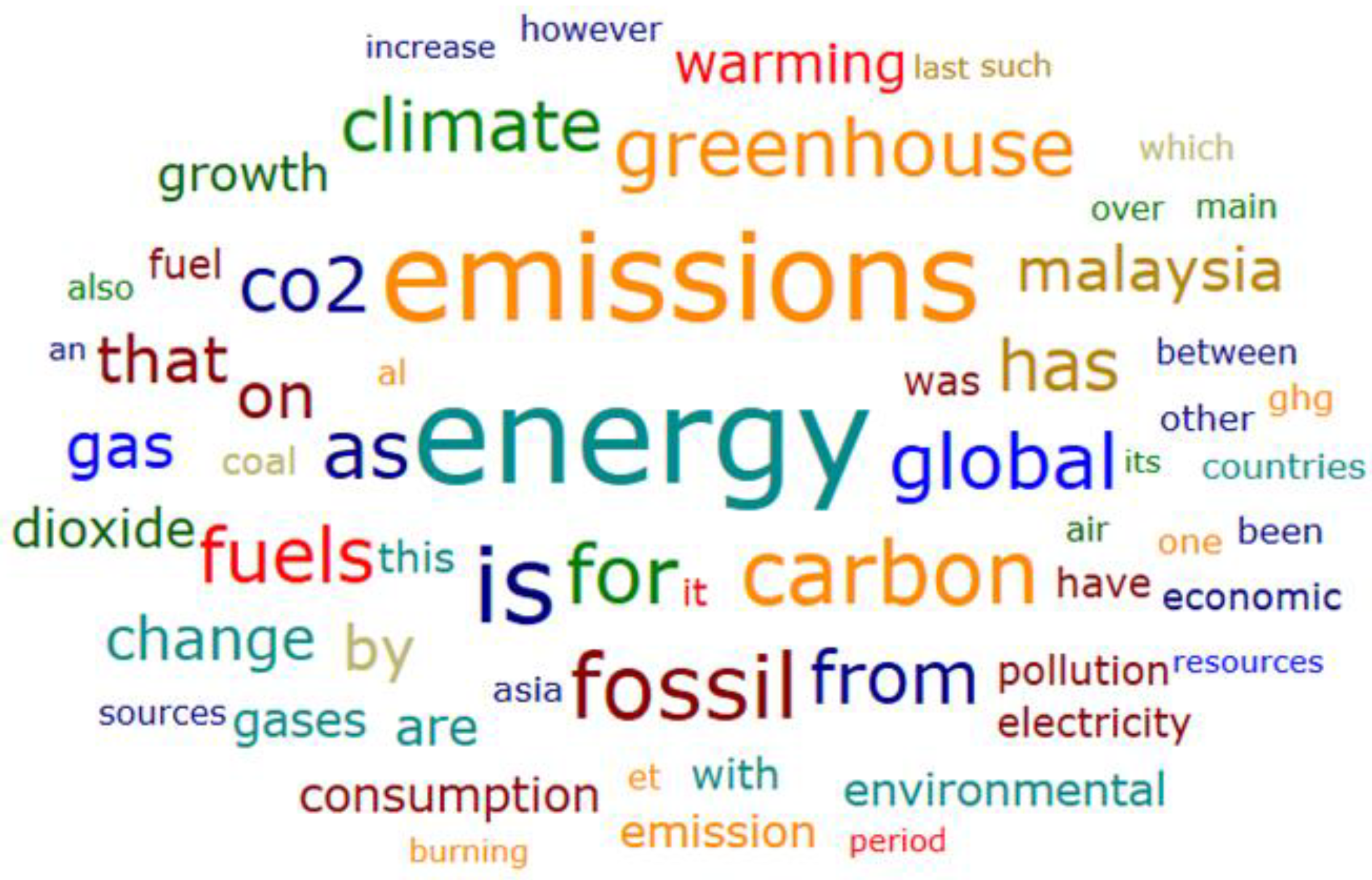
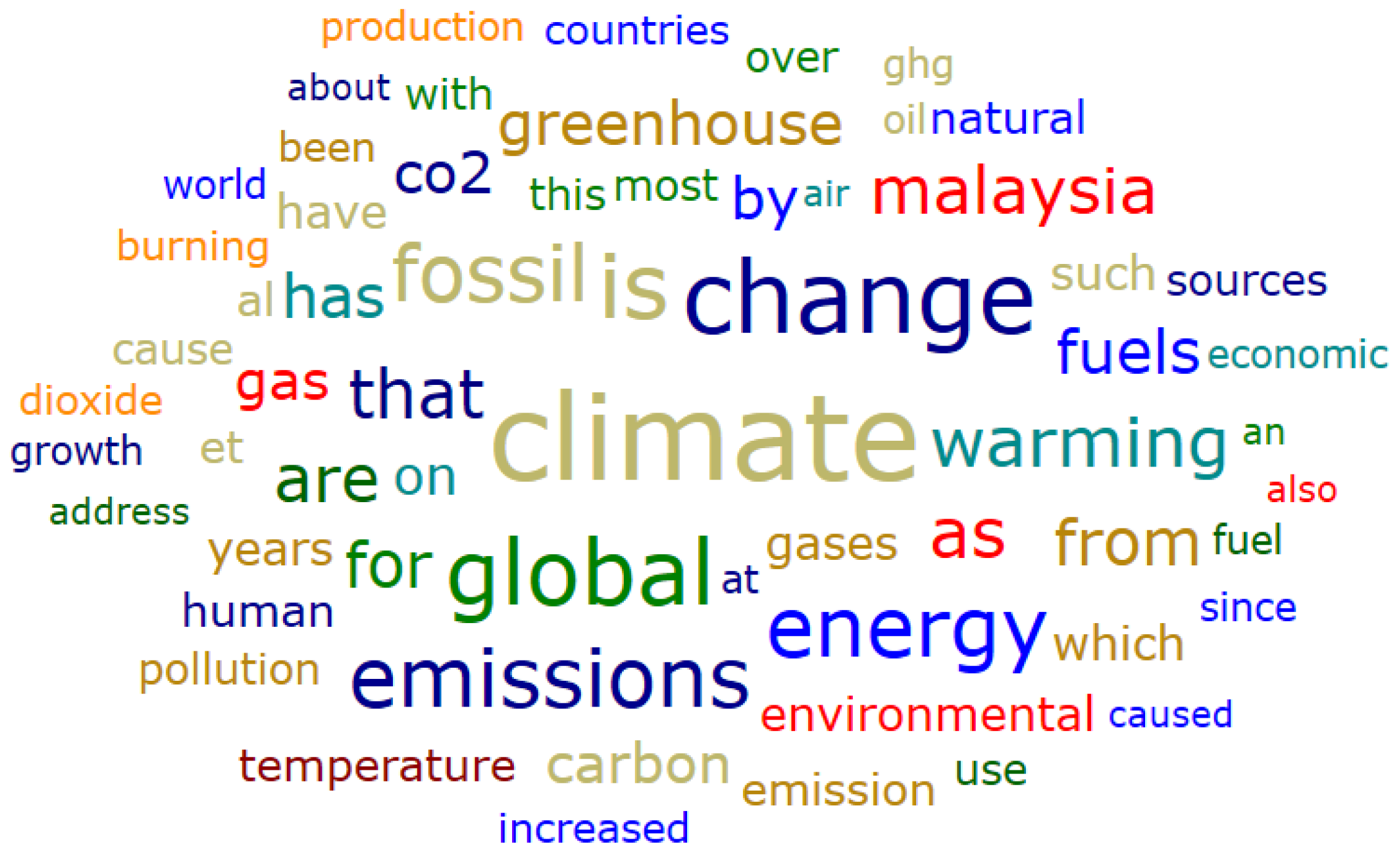
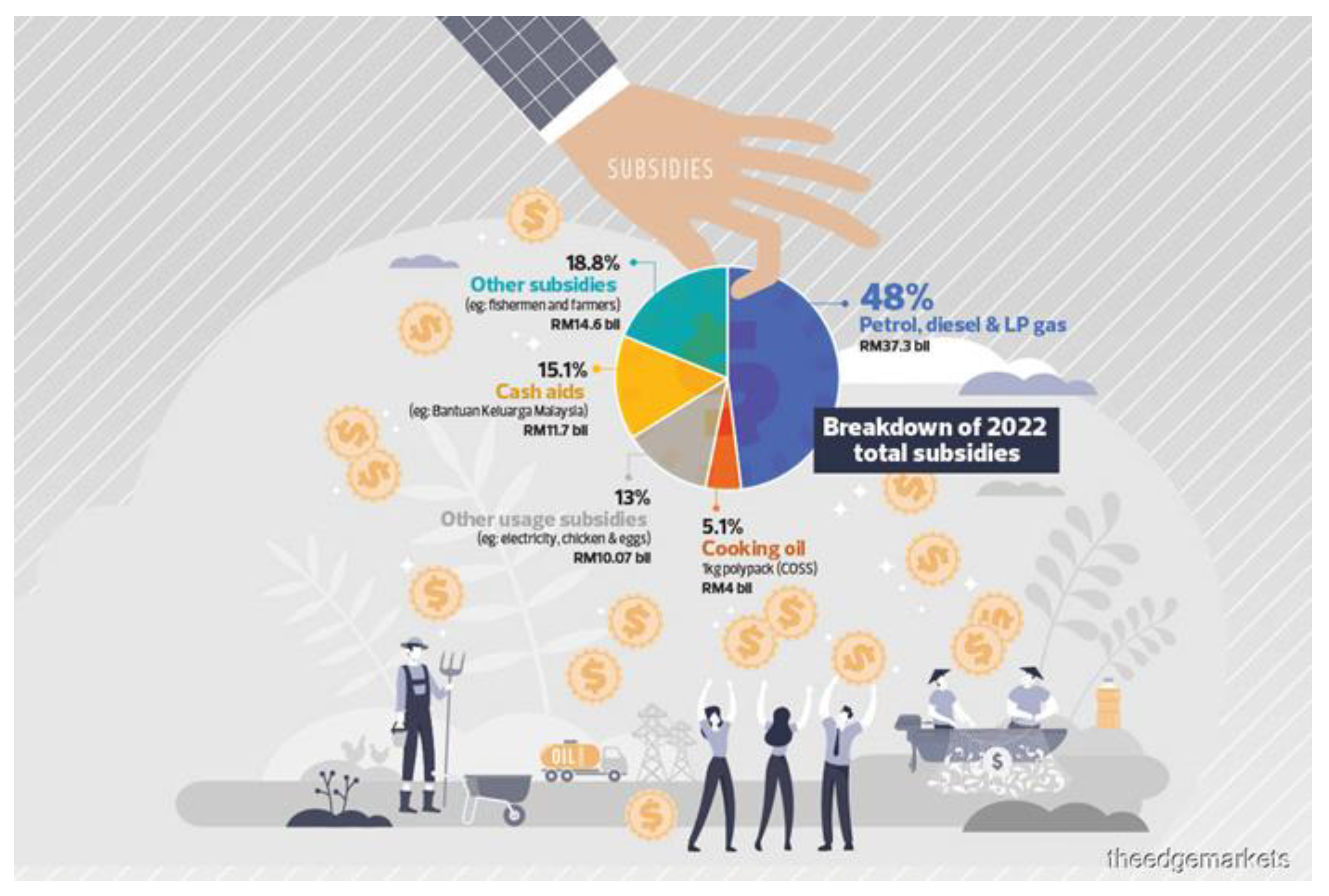

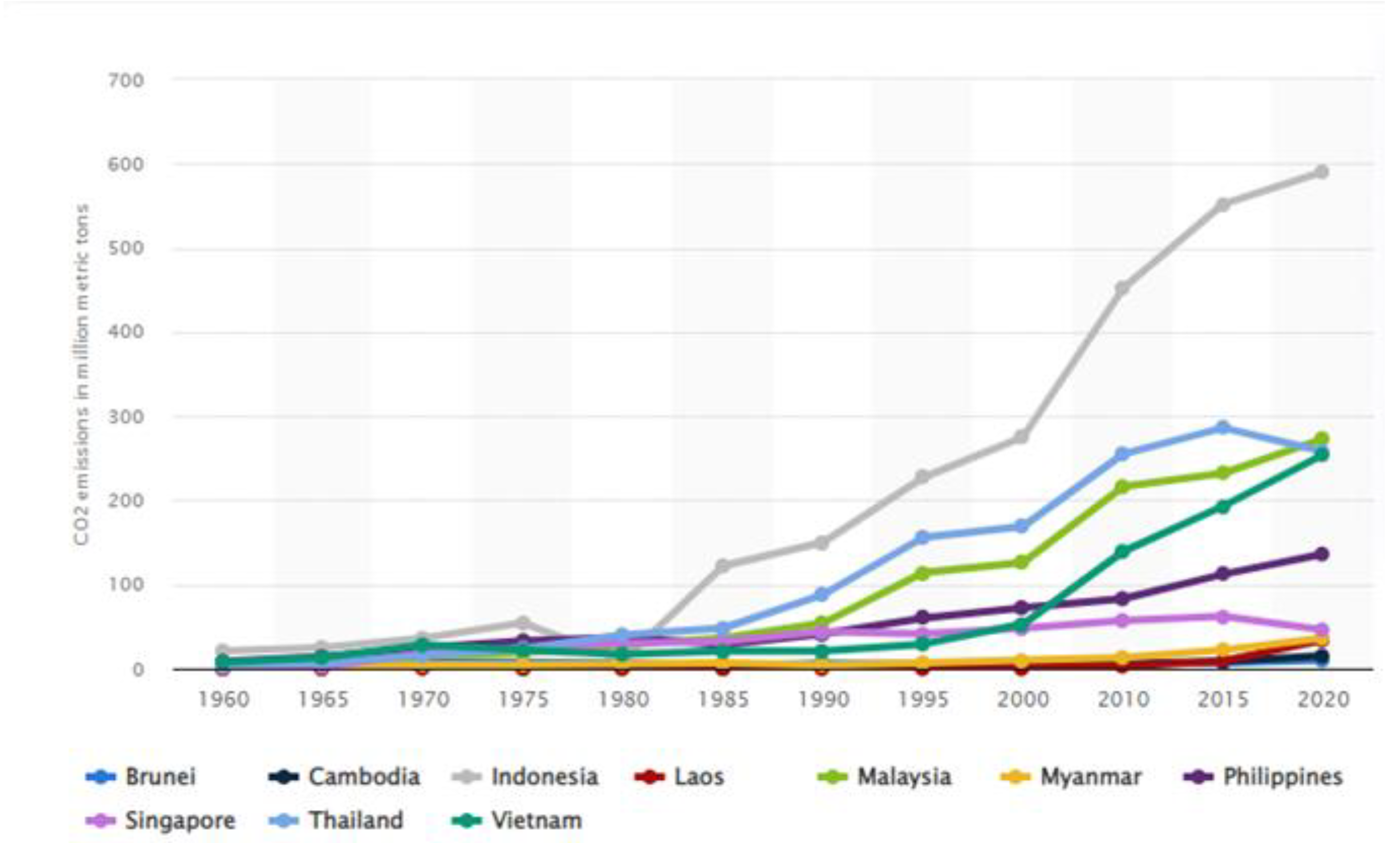
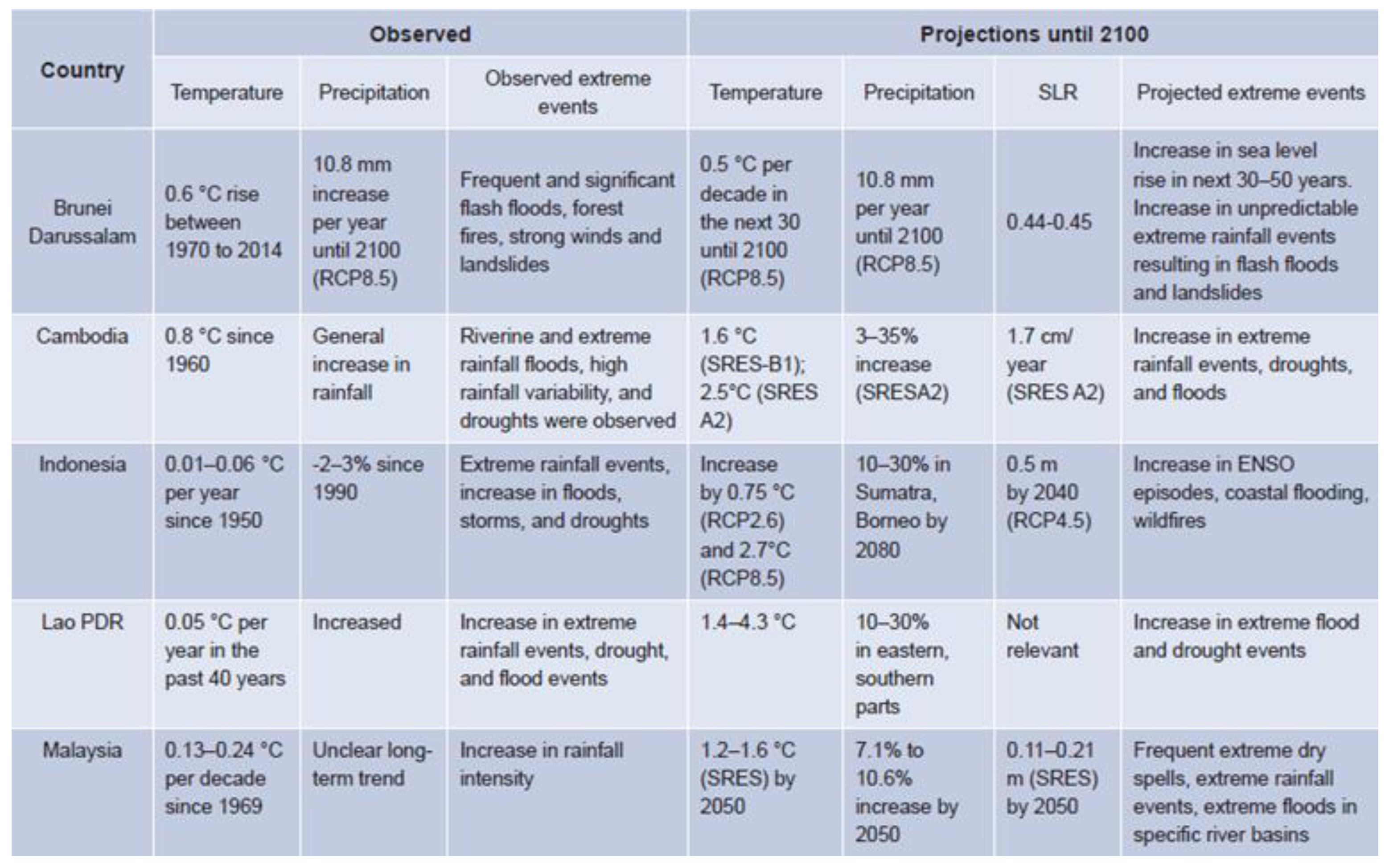

| Energy Source | Cost/kWh | Emission |
|---|---|---|
| Gasoline/fossil fuel | USD 0.60/kWh | 8,887 gCO2/gallon (vehicle) [104] |
| Hydrogen | USD 0.50/kWh | 122 gCO2(eq.)/kWh (produced using electrolyser) [105] |
| Diesel/fossil fuel | USD 0.30/kWh | 1.27 kgCO2/kWh (generator) [106] 10,180 gCO2/gallon (vehicle) [104] |
| Solar photovoltaic | USD 0.20/kWh | 6 gCO2(eq.)/kWh [107] |
| Wind | USD 0.09/kWh | 6 gCO2(eq.)/kWh [107] |
| Hydropower | USD 0.05 to USD 0.07/kWh | 18.5 gCO2(eq.)/kWh [108] |
| Sector | Recommendations |
|---|---|
| Hydrogen infrastructure |
|
| Fuel cell applications |
|
| Emerging fuel cell technologies |
|
Disclaimer/Publisher’s Note: The statements, opinions and data contained in all publications are solely those of the individual author(s) and contributor(s) and not of MDPI and/or the editor(s). MDPI and/or the editor(s) disclaim responsibility for any injury to people or property resulting from any ideas, methods, instructions or products referred to in the content. |
© 2023 by the authors. Licensee MDPI, Basel, Switzerland. This article is an open access article distributed under the terms and conditions of the Creative Commons Attribution (CC BY) license (https://creativecommons.org/licenses/by/4.0/).
Share and Cite
Azni, M.A.; Md Khalid, R.; Hasran, U.A.; Kamarudin, S.K. Review of the Effects of Fossil Fuels and the Need for a Hydrogen Fuel Cell Policy in Malaysia. Sustainability 2023, 15, 4033. https://doi.org/10.3390/su15054033
Azni MA, Md Khalid R, Hasran UA, Kamarudin SK. Review of the Effects of Fossil Fuels and the Need for a Hydrogen Fuel Cell Policy in Malaysia. Sustainability. 2023; 15(5):4033. https://doi.org/10.3390/su15054033
Chicago/Turabian StyleAzni, Muhammad Asyraf, Rasyikah Md Khalid, Umi Azmah Hasran, and Siti Kartom Kamarudin. 2023. "Review of the Effects of Fossil Fuels and the Need for a Hydrogen Fuel Cell Policy in Malaysia" Sustainability 15, no. 5: 4033. https://doi.org/10.3390/su15054033
APA StyleAzni, M. A., Md Khalid, R., Hasran, U. A., & Kamarudin, S. K. (2023). Review of the Effects of Fossil Fuels and the Need for a Hydrogen Fuel Cell Policy in Malaysia. Sustainability, 15(5), 4033. https://doi.org/10.3390/su15054033







